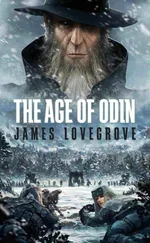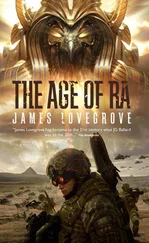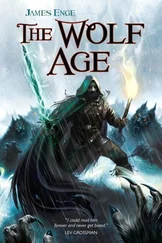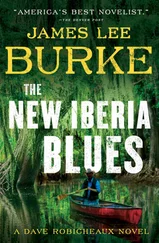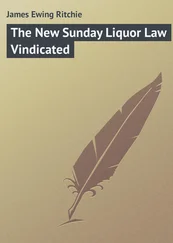This story had two irresistible elements: ice and suspense. The coldest places on earth had seemed, for more than a generation, to invite the greatest effort of imagination. One of the reasons was the obsession of Captain Robert Falcon Scott. His journeys were the first truly dazzling exploits of the twentieth century as far as any British schoolchild was concerned, and the fact that his fame was sealed by a failure (to beat Amundsen to the South Pole) only proved what a stalwart he was.
Knowing that he was doomed, Scott wrote his Message to the Public: ‘Had we lived, I should have had a tale to tell of the hardihood, endurance and courage of my companions which would have stirred the heart of every Englishman.’
As a youngster in New Zealand, on his two-hour journey to school, Hillary read the stories of such men. Their names cascaded down the years and inspired the expedition put together by John Hunt to conquer the unconquerable mountain, which they all saw as part of an old story – daring and sad. Where Mallory and Irvine were assumed to have failed in 1924, died and lost near the summit without having reached it, there was still a game to be played, and won.
In 1953, time and distance meant that such drama was spun out: no pictures from the scene, no breathless commentary day by day, but weeks of silence. The result, the benefit you might say, was that when good news came, of unexpected progress, or triumph, it came out of a clear blue sky like a roll of thunder. And the Everest expedition had another ingredient that infused the suspense with poetry.
James Morris of The Times was 26 when he was told over lunch at the Garrick Club in London that he could, if he wanted, become Special Correspondent to cover the Everest expedition. The paper had put up some money, and as a result had secured the rights to all the dispatches sent home by Hunt and his men. And in Morris they had found their man, a storyteller of brilliance and effervescent panache whose travels and portraits of people and places would make him one of the most celebrated writers of his age, both as James, and later as Jan, after he decided to become the woman who’d always been inside him.
Morris trekked to base camp with the expedition, though he had no experience of real mountains, and began to plan how he might break the great news, if it came. The problem was that Fleet Street was not going to accept for a moment the deal that The Times had done with Hunt, and dispatched reporters to Kathmandu with instructions to do whatever was necessary to get the story first. You can imagine the Mail and the Telegraph and the Express working on Sherpa guides to make sure that the news would reach them first, perhaps carried on cleft sticks from the slopes of Everest, in an icy echo of Evelyn Waugh’s Scoop .
Morris was up to the task. He described the expedition’s progress to base camp, at 22,000 ft, with elegant verve, and he wasn’t going to let the story slip away. So he devised a code that would confuse any of his competitors who might see the telegram that would be flashed to the British Embassy in Kathmandu: he had no doubt that they would. And with the rest of the expedition, the only reporter in the camp, he waited.
They had no means of knowing that Hillary and Tenzing were on the way, only the knowledge that the wind might have dropped. But they were, carrying heavy backpacks and worried about their oxygen. Hillary wrote of the climb up the last ridge: ‘My solar plexus was tight with fear as I ploughed on. Halfway up I stopped, exhausted. I could look down 10,000 feet between my legs and I have never felt more insecure. Anxiously, I waved Tenzing up to me.’
And they were there, alone. Afterwards, to put an end to the argument about who got there first, they issued a joint statement, saying it was done together. But later Tenzing said straightforwardly that Hillary’s foot was the first on the summit – after, in his words, ‘a few, very weary steps’ – then they joined hands and stood together, never thinking there might be an argument over who got there first.
It was half past eleven in the morning on 29 May 1953 when they unfurled four little flags on a string tied to Tenzing’s ice axe – the Union Flag, and alongside it the flags of Nepal, India and the United Nations, just seven years old. Only Hillary took photographs for a quarter of an hour – so there are none of him at the summit – and they started down.
Tenzing, the Nepalese Sherpa, had climbed the sacred mountain, which had defeated everyone else. He said that in the villages they asked him if he had seen the gods above the clouds. Lord Shiva, perhaps, for that was where he lived. No, said Tenzing, but he had felt a calm that inspired him, and did for the rest of his life.
They took their news down. Morris described seeing Hillary in the half light: ‘Huge and cheerful, his movement not so much graceful as unshakably assured, his energy almost demonic. He had a tremendous, bursting, elemental, infectious, glorious vitality about him, like some burly, bright diesel express bounding across America.’
And then the telegram. ‘Snow condition bad,’ he wrote, which meant ‘Everest climbed.’ In the rest of the message, which said the assault had been abandoned until the weather cleared, he used the code words agreed for Hillary and Tenzing. The rest of Fleet Street, squatting in Kathmandu, swallowed it. The Times had its scoop and on the morning of the Coronation it broke the news. The bells rang out for them.
An answering telegram reached the expedition that day, addressed to Sir Edmund Hillary, the new Queen’s first Knight.
He was a hero for the rest of his life. There were expeditions to both the poles, up the Ganges, back to the Himalayas, but above all for Hillary there was a commitment to the Nepalese people whom he’d come to know on the great climb. The Trust he established built two dozen schools; hospitals, bridges, airfields. He was celebrated as a humanitarian, and never lost the straightforwardness of the man who said he had always hated the ‘danger part’ of climbing and thought that the greatest of all feats was the comradeship that built up in the lonely places. ‘The giving of everything you’ve got,’ he said, ‘is really a very pleasant sensation.’
Edmund Hillary, adventurer, scientist and beekeeper, died in 2008, aged 88.
He once said that in honouring explorers from the past people should remember that it was ‘still not hard to find a man who adventures for the sake of a dream … or one who will search, for the pleasure of searching. Not for what he may find.’ That was the spirit Hillary tried to bring to his time.
When Elizabeth David began to write her first book for the British on the food of the Mediterranean, her readers were still disentangling themselves from wartime rationing. Olive oil was something you bought at the chemist, with a warning on the little bottle: ‘For external use only.’ She was going to raise their sights, even though she must have known that very few of the home cooks to whom she was addressing herself would have the inclination, let alone the appetite, to follow her instructions for stuffing a whole sheep. Yet that is what they might have done on the Greek island where, as a young woman, she had decamped at the end of the thirties with her married, older lover and where she consummated a life-long affair with food.
Not food as part of a dull household routine, but food as a creative force. More than that, food as the emblem of people’s lives: the thing that told you everything about them. When David published French Provincial Cooking in 1960 she told her readers of how she’d found a tattered book of recipes at the Sunday market in the cathedral square of Toulouse which exuded ‘a certain atmosphere of provincial life which appears orderly and calm whatever ferocious dramas may be seething below the surface’. And those hidden dramas were as interesting to her as the calm. Delving into the cuisine of the south of France, she gave her readers a sharp nudge: ‘It does not do to regard Provence simply as Keats’s tranquil land of song and mirth. The melancholy and the savagery are part of its spell.’
Читать дальше


